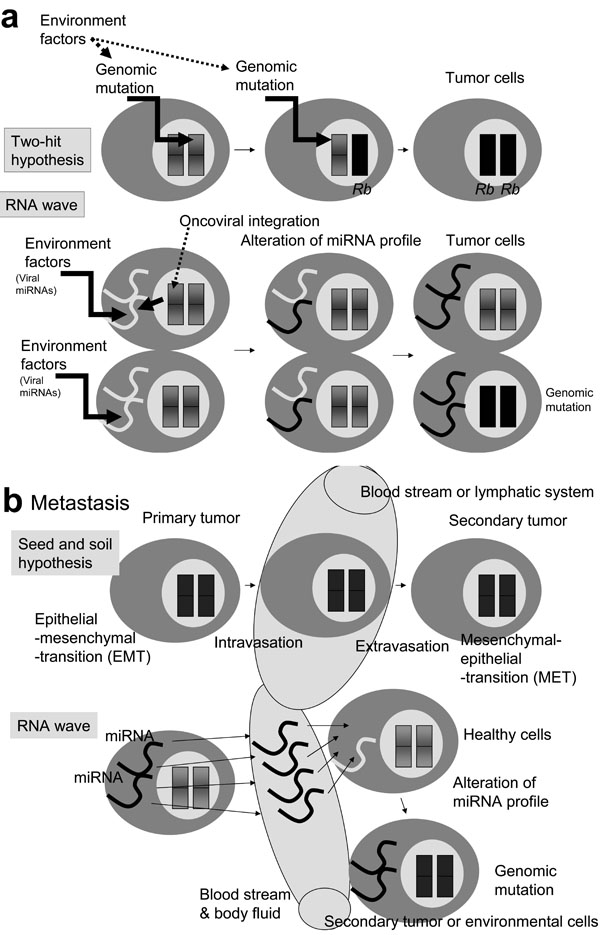Fig. (2) Incorporation of tumorigenesis and metastasis into the RNA wave. (a) Knudson’s two-hit hypothesis and the RNA wave. Sporadic retinoblastoma requires two hits of somatic mutation in homozygote gene by environmental factors [10]. The mutation of RNA is less stable than DNA and RNA has no repair enzymes. Environmental factors including viral miRNA or integrated proto-oncovirus miRNA can qualitatively and quantitatively change the profiles of resident miRNAs of cells. Deleted or ectopic miRNA alterations (called mutations) initiate tumorigenesis. In this case, the first hit to the resident miRNA genes, and the second hit to the genomic miRNA genes. A more sophisticated Knudson hypothesis may involve into more advanced RNA wave. (b) In the seed and soil hypothesis of metastasis, the primary tumor cells disseminate by intravasation to the blood or lymphatic system. This process requires an epithelial-mesenchymal transition (EMT) by the primary tumor cells, as well as primary tumors extravasation to distant tissues. There a mesenchymal-epithelial transition (MET) enables the primary tumors to change into the secondary tumors (metastasis). On the other hand, miRNAs such as miR-21 expressed in breast and ovarian cancer can easily be transported into the blood and possibly the lymphatic system. The cells in metastasis sites or their environment can alter profiles of miRNA expression by incorporation of the new miRNA into the cells. The change in the resident miRNAs may induce a change in the genomic miRNA and tumorigenesis via epigenetic chromatin modeling or chromosome mutation under the RNA wave. In this case, transfer of primary tumor cells with subsequent EMT and MET is not required at all.


